Today, March 14, marks an important day for Capcom and Niantic’s Monster Hunter Now, namely the title’s six-month anniversary, reached through success after roaring success.
Like many a fan of the franchise, I kept a watchful eye on this latest series entry through its incubation period, joined the pre-registration party, and waited eagerly for the autumnal hatchling to show what it really had to offer.
The results did not disappoint.
Six months later and Monster Hunter Now can already be called a huge win for its developers, having quickly grown into a giant of the geolocation genre, broadened brand recognition, and provided newcomers and veterans with a true mobile encapsulation of the core gameplay formula that only continues to evolve with every update.
Monster Hunter Now is in fact Niantic’s second-biggest game, behind only the frankly untouchable Pokémon Go; it soared to 10 million downloads in five weeks and $100 million in revenue in three months, and has recently risen to an impressive $150 million.
For Capcom, Now has meant a revenue boost of course - the company announced payrises all around only last week, in fact - but there’s more to it than that. The ongoing publicity that a successful, active mobile game provides filters into public consciousness and ultimately helps grow an IP.
Add to this the frequent updates Now is receiving - hitting all the right mobile beats with its introduction of new monsters, seasonal releases, and time-limited hunts - and players have many an incentive to keep up to date on the franchise; in turn, this heightened awareness is an automatic win for marketing, with the potential to increase sales of main series titles currently available on PC and consoles.
Naturally, this is also sure to bolster sales of the upcoming 2025 title Monster Hunter Wilds.
On the hunt
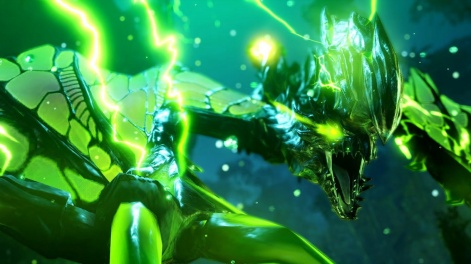
Monster Hunter Now’s early-game only offers a small selection of monsters to fight who get increasingly stronger as players progress - rising in star rankings to denote difficulty and the increased potential for rarer material drops.
While fighting the same handful of monsters again and again wasn’t the most exciting start for me personally, it does serve to familiarise players with the series’ core gameplay loop; hunting early monsters like Great Jagras and Kulu-Ya-Ku net players with different materials that can be invested into weapons and armour - giving a bounty of customisation options from helmets to hammers, gauntlets to longswords.
The craftable gear reflects characteristics of the monster the materials come from, and so begins to encourage players to go out looking for specific hunts. Want a bow with poisonous arrows? Better track down some more Pukei-Pukei…
With this gameplay loop in mind, Monster Hunter Now shows players all the monsters currently spawned in their area and exactly where to go to find them; it encourages planning a walk along an optimised route to hunt all a player’s desired monsters.
And as players progress through the story, the variety of monsters expands significantly with fan favourites like Legiana and Anjanath providing a greater challenge and greater reward; the final prize for completing the initial story is a battle against the face of the franchise, Rathalos, and once victory has been claimed, players can take on even tougher challenges and participate in time-limited events like the Black Diablos, Pink Rathian and Azure Rathalos hunts.
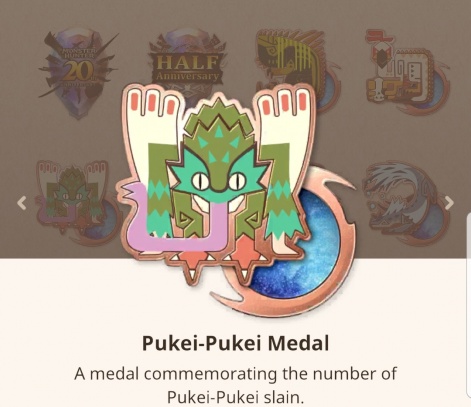
Gating these events behind significant story progression is something of an unusual design choice as it diminishes their ability to draw in new players (who will most probably miss the event monster that drew them in by the time they catch up), and may be one reason why Now’s install numbers slowed so significantly since the initial race to 10 million.
For those players who are up to date, however, Now provides a strong roster of monsters to hunt with over 20 species introduced thus far. These give each player plenty of choice in what to focus their hunts on - in my case predominantly Pukei-Pukei, Rathian, and the event-only Azure Rathalos - depending on the equipment they want to build.
Hunting a specific monster enough times also nets players a medal of that monster, commemorating the achievement and aiding that sense of progression. And encountering the same creature again and again has more tangible value in Now than in Pokémon Go, with parts to upgrade weapons and forge new armour with better skills being a stronger incentive for me, at least, than catching multiple of the same Pokémon to earn candy.
Rathalos vs Pikachu
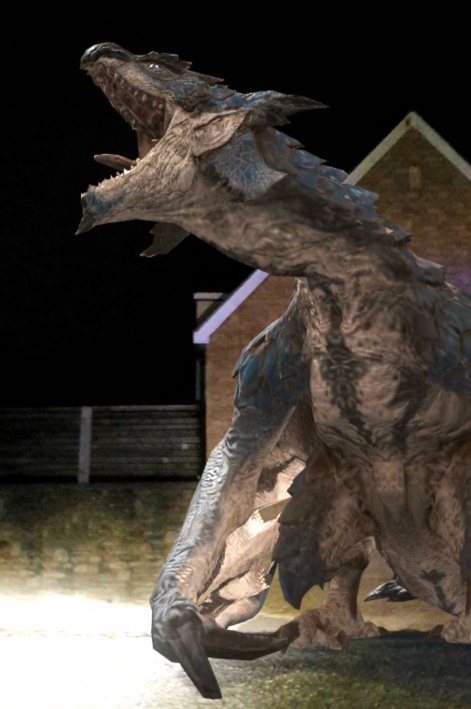
Despite their stark gameplay differences, comparing Monster Hunter Now with Pokémon Go is an inevitability when both are geolocation-based, AR-infused mobile games leveraging Japanese monster IPs.
And in comparing them, I would argue Now is more fun as a game, but Go is the better geolocation game. After all, walking doesn’t have any intrinsic in-game benefits in Now - you can see where your target monster is, close the game, head straight there, and then open the game again for the important bit: the hunt.
Combat against said monster in Now is much more involved than catching Pokémon, making for a more exciting gameplay experience but not one where a player can realistically carry on walking while playing; this means heading to a specific location, stopping there until the monster is defeated - however long that may take - and then moving on to the next location.
Different weapons play differently too, with my weapon of choice, the bow, making use of gyro controls. This renders walking during a hunt practically impossible, since aiming the phone at the right angle is so intrinsic to landing hits and even seeing the target monster; frankly, gameplay is tactile and precise while standing on the spot, but quickly falls apart on the move.
And Niantic clearly understands the inconvenience playing Now outside can be, selling Paintballs as a solution. The item can be launched at a monster, and that monster will then follow the player around to hunt from the comfort and convenience of home at a later date - at which point the purpose of Now as a geolocation game is somewhat lost.
In Pokémon Go, meanwhile, Pokémon can be caught in seconds, making it a convenient casual side activity during a walk, but offering little to do from home besides PvP. Of course, this isn’t to say Pokémon Go fails as a game either - in fact it’s one of the most successful mobile games in history with billions of dollars behind it, in part due to its strong compatibility with the geolocation genre.
A roaring success
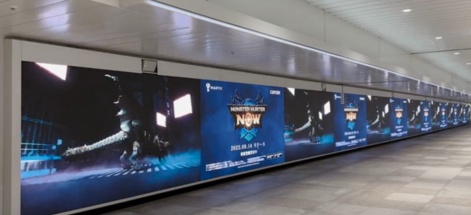
In its first half-year, the vast majority of Monster Hunter Now’s victories can be attributed to the Japanese playerbase, whom Capcom and Niantic knew to leverage from the word ‘go’. With promotional tactics in full force, Now became Japan’s most downloaded free game during its launch period and was already Niantic’s second-biggest game ever by the end of September. Japanese player spending accounted for 67.3% of the revenue at that time, a proportion that has since increased to 71%.
Japan doesn’t only house Now’s biggest spenders, but its biggest playerbase too, with 35% of downloads coming from the region. The US audience is in second with 15% of downloads but only 6% of spending in these first six months.
In fact, spending on the whole has slowed substantially - from $100 million in Now’s first three months to only a further $50 million in the next three - but events have been taking place throughout March for Now’s half-year anniversary and for the Monster Hunter franchise’s 20th, offering a golden opportunity to turn this back around.
During the celebratory period monster spawns have been far more frequent, giving players more to do in-game without adding any significant burden on game development staff, and limited-time monsters have returned over the past fortnight to get players out hunting even more for rare resources; I for one was glad to finally forge the infamous Black Diablos Bow.
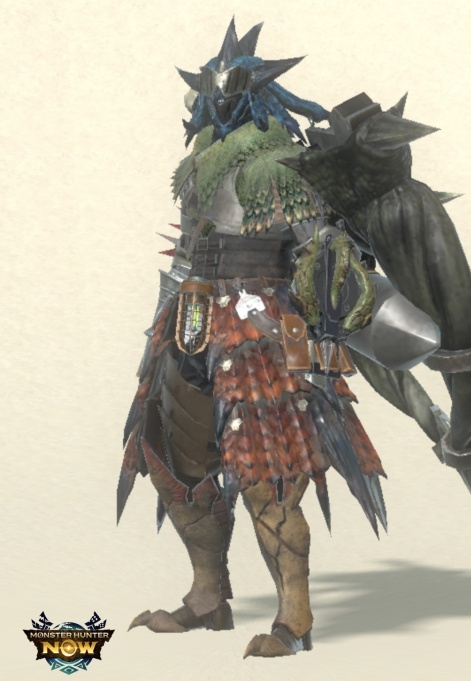
Monster Hunter Now has also integrated a battle pass starting today as part of a big new seasonal update, which should bring consistent income to the game as players earn rewards they can’t actually accept without paying. This battle pass looks set to provide even more content and challenges, with a free tier to ensure everyone sees the paid tier - and what rewards they could be earning if they paid up.
All in all, it’s been a big first six months for Monster Hunter Now, and the game has irrefutably proven a success for Capcom, Niantic, and the Monster Hunter franchise at large. For now, I’ll be busy tackling the latest anniversary content with my new bow, and waiting patiently for some personal favourites like Garangolm, Tigrex and Astalos to make the move onto mobile.





















